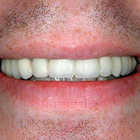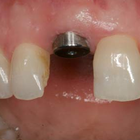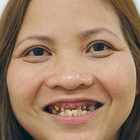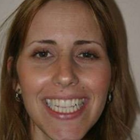Dental Implant in Santo Domingo
Search and Compare the Best Clinics and Doctors at the Lowest Prices for Dental Implant in Santo Domingo

Find the best clinics for Dental Implant in Santo Domingo
With Medijump you can browse 6 facilities offering Dental Implant procedures in Santo Domingo. The cheapest price available is $100 in Santo Domingo
Dental Implant in Dominican Republic
Price: $ 100
Dental Implant in Santo Domingo
Price: $ 100
Dental Implant in Santiago de los Caballeros
Price: $ 500
Vietnam offers the best prices Worldwide
Price: $ 1
Dr. Mabel Bonilla, located in Calle Guayubin Olivo, Santo Domingo, Dominican Republic offers patients Dental Implant procedures among its total of 5 available procedures, across 1 different specialties. The cost of a Dental Implant procedure ranges from $500 to $550, whilst the national average price is approximately $367. All procedures and treatments are undertaken by just a small team of specialists, with 2 in total at the Dental, and they are accredited by American Dental Association
Anatomica Hair Transplantation Clinic, located in Calle Guayubin Olivo, Santo Domingo, Dominican Republic offers patients Dental Implant procedures among its total of 17 available procedures, across 3 different specialties. The cost of a Dental Implant procedure ranges from $100 to $49,000, whilst the national average price is approximately $367. There are many specialists available at the Clinic, with 7 in total, and they are not accredited by any recognized accreditations institutes
From 2 verified reviews
Joseph Salazar, 04 June 2019
After weighing in all things that need to be considered and the different options available for dental tourism, and reading a lot of reviews, I decided to go to Santo Domingo, Dominican Republic, to see Dr. Juan Tomas Pena.The Dr. and his team at Denstetica were amazing, knowledgeable, attentive, very welcoming and friendly.The first phase of my treatment involved four implants and the extraction of a molar; after the implants have set, I will go back for phase two, which is to have my crowns done.Dr. Pena, was very thorough during his examination and throughout his work, making sure that I was comfortable and that everything was done to perfection; all in about 4 hours and I didn’t have any swelling!I surely recommend Dr. Pena and his fantastic group at Denstetica!
From 70 verified reviews
Danielle Courteau, 23 November 2019
Highly competent dentists and specialists, efficient staff. Highly recommended.
From 2 verified reviews
Ronald, 03 March 2018
Excellent clarified all my doubts and the very personalized treatment Thanks to Ms. Denisse.
Hispadent - Jose Alonso MD, located in Calle Guayubin Olivo, Santo Domingo, Dominican Republic offers patients Dental Implant procedures among its total of 38 available procedures, across 2 different specialties. Currently, there's no pricing information for Dental Implant procedures at Hispadent - Jose Alonso MD, as all prices are available on request only, whilst the national average price is approximately $367. There are many specialists available at the Dental, with 4 in total, and they have multiple recognized accreditations, including: AAAM - American Academy of Aesthetic MedicineAGD - Academy of General DentistryAACD - American Academy of Cosmetic DentistryAAID - American Academy of Implant DentistryAOD - Asociacion Odontologica Dominicana
- Home
- Dominican Republic
- Santo Domingo
Compare Before & After Photos of _procedure_photos.phpDental Implant


Front view


Front view


Front view


Front view


Front view
WHY US?
At Medijump, we're making medical easy. You can search, compare, discuss, and book your medical all in one place. We open the door to the best medical providers worldwide, saving you time and energy along the way, and it's all for FREE, no hidden fees, and no price markups guaranteed. So what are you waiting for?

Free

Best Price

Widest Selection

Risk-Free
What you need to know about Dental Implant in Santo Domingo

A dental implant is a medical device that provide support to artificial teeth. It's surgically placed into the jaw to act as a replacement for the root of a missing or damaged tooth, which in turn serves to hold a replacement tooth or bridge. It functions and looks much like a real tooth, restoring your ability to chew and improves your overall appearance. Dental implant surgery is considered as a better alternative to dentures or bridgework that does not fit well. It also offers a great option for people when they do not have enough natural teeth roots left to build denture or bridgework replacements.
Since dental implants eventually fuse with your jawbone over the span of several months, it won’t make noise, slip, or cause bone damage the way dentures or bridgework might. Dental implants also enable natural speech, look and feel like your own teeth, make eating easier, and improves your appearance. However, the surgery may involve several stages, and, in some cases, it may require two separate visits to the clinic to complete. Ensure to look for a specialist in a reputable clinic for the best results.
What is the cost of Dental Implant in Santo Domingo?
Price differences abound in Santo Domingo for Dental Implant based on the clinic, the proficiency of the surgeon, and the individual requirements of the patients. It's essential to realize that dental insurance usually doesn't cover the entire bill for this treatment, though it might cover a part. Several dental clinics provide finance schemes or payment alternatives to assist in easing the financial burden. For more precise cost estimates, reach out to your dental service provider or a nearby clinic.
What does a Dental Implant Procedure Involve?
Dental implant surgery generally requires several stages. Each stage may be performed under general or local anesthetic. The first stage is removing the damaged tooth. Then, if your jawbone is too soft or not thick enough, your dentist may perform bone grafting to create a more solid base for the implant. The bone graft may be natural (taken from another part of your body) or synthetic (a bone-substitute material). If you only need minor bone grafting, the implant surgery can be performed on the same day. However, if you need a significant amount of bone graft, the implant surgery may have to be postponed until the transplanted bone grows enough new bone to support the dental implant.
The next stage after the damaged tooth removal and bone graft (if you need one) is placing the dental implant. To do this, your dentist makes an incision to expose the bone and puts the metal implant post deep into the bone. At this stage, you will still have a gap where your tooth is missing. Your dentist will place a temporary denture for appearance. Once the metal implant post is placed, osseointegration begins. This is a process where the jawbone grows into the surface of the implant and can take several months to complete. After osseointegration is complete, your dentist will place the abutment, which is a small connector post that will hold your new tooth. The final stage, after the abutment is placed, is placing the crown, which is the tooth-looking part. You can choose between a removable crown and a fixed crown.
How Long Should I Stay in Santo Domingo for a Dental Implant Procedure?
The length of your stay in Santo Domingo for a Dental Implant depends on numerous considerations like the intricacies of the procedure, the quantity of implants required, and your personal recovery process. Each stage of dental implant surgery is done in separate appointments. After each appointment, you should be able to leave the hospital or clinic right away. However, you should stay in Santo Domingo for at least 2 weeks for completion of the work, the initial recovery time, and follow-up checkups.
What's the Recovery Time for Dental Implant Procedures?
The recuperation duration following a Dental Implant or dental implant operation can widely vary and is shaped by multiple aspects. Initial healing of the tissue might require only a handful of days, but complete osseointegration (the fusion of the implant with the jawbone) generally spans several months. This window could be extended for patients requiring auxiliary procedures such as bone grafts, or those with prevailing health issues that may impede the healing process.
Post-procedure, it's not unusual to experience a degree of discomfort, which could manifest as minor pain, swelling of your gums and face, skin and gum bruising, and slight bleeding. Such symptoms are a standard phase of the recovery process and should alleviate within a fortnight. In this interim, it's advisable to stick to a soft diet to not overload the implant site with undue pressure. Any strenuous physical exertion should be put off to circumvent potential complications.
Maintaining excellent oral hygiene is paramount to facilitate healing and stave off infection. Regular brushing and flossing, being particularly gentle around the surgical area, coupled with rinsing your oral cavity with warm saline water, can contribute to keeping the region hygienic.
What sort of Aftercare is Required for Dental Implant Procedures?
After each stage of surgery, you may have to eat soft foods. Since you may experience swelling, bruising, pain, and minor bleeding, your dentist will prescribe pain medications or antibiotics to help ease your discomfort. During your recovery period, you need to avoid smoking as it can contribute to implant failure and complications.
No special care is required for dental implants. Nonetheless, you need to practice good oral hygiene in order to maintain the implant and your remaining natural teeth. Make sure to brush your teeth twice a day, floss daily, and rinse your mouth with an antiseptic mouthwash. You also need to see your dentist regularly and avoid damaging habits, such as chewing hard items.
What's the Success Rate of Dental Implant Procedures?
The efficacy of Dental Implant, alternatively referred to as dental implants, in Santo Domingo, is typically impressive, boasting effectiveness percentages as high as 98% in some studies. This positions dental implants as one of the most reliable procedures within dental care's realm. Nevertheless, it's worth mentioning that the success rates might fluctuate, influenced by several factors.
The patient's overall health is a key determinant of the thriving outcome of a dental implant procedure. Individuals exhibiting optimal health usually witness higher success rates. Pre-existing health issues like diabetes, osteoporosis, and periodontal ailments can theoretically impact the efficacy of the implant.
Additional contributing factors to the success rate encompass the quality and abundance of the individual's bone structure. Patients boasting plentiful, healthy bone are ordinarily the perfect candidates for dental implants. However, those who have experienced bone loss might need to undergo a bone grafting procedure before the implant procedure. This step can provide a robust base for the implant and enhance the chances of a successful result.
Are there Alternatives to Dental Implant Procedures?
If you are not a candidate for dental implant surgery, or you simply do not want to undergo the procedure, you can opt for the alternatives. The alternatives include:
- Mini dental implants, which is a small type of dental implants. The structure is similar to regular dental implants, but are somewhat smaller in size. Unlike regular dental implants, dentists can often place mini implants only in one visit using local anesthesia. You may also be able to use your new teeth on the same day.
- A same-day implant is essentially similar to traditional dental implants. However, your dentist performs the whole process in just one day, skipping the process of wound healing and osseointegration.
- Implant-supported dentures or All-on-4 is an alternative if you need to fix a complete upper or lower set of teeth. During this procedure, four to six implants are placed into your jawbone as a base to attach and stabilize your denture.
What Should You Expect Before and After the Dental Implant Procedure?
Grasping what lies ahead before and post the Dental Implant can lessen potential worries and guarantee you are fully equipped for the upcoming journey. Prior to the procedure, your dental practitioner will conduct an all-inclusive dental assessment. This check-up may encompass dental X-rays and sophisticated 3D imaging to examine the status of your oral cavity.
The dental professional will also explore your medical history. If you're suffering from specific heart disorders or orthopedic implants, your dental practitioner might suggest antibiotics to avert infection. A personalized treatment blueprint, customized to your circumstances, will be constructed. This strategy takes into account factors like the amount of teeth you need substituted and the state of your jawbone. The procedure is typically carried out under local anesthesia to mitigate any discomfort.
Subsequent to the operation, experiencing slight unease is usual. You might witness inflammation of your face and gums, discoloration of your skin and gums, soreness at the insertion area, and insignificant bleeding. Your dental specialist will recommend medications to soothe these indicators. In case inflation, unease, or any other complications intensify in the days post-operation, it's crucial to reach out to your oral surgeon. Post-operation will require you to consume mushy foods as the operated site recovers. Moreover, you'll be guided to abstain from smoking, as it can hinder recovery and influence the triumph of the dental implant.
Following the positioning of the implant, the healing process, and fusion with the bone (osseointegration) transpire over an extended period. During this interval, maintaining robust oral cleanliness is vital. This involves frequent brushing, the use of dental floss, and cleansing with an antibacterial mouthwash. Periodic dental examinations are obligatory to track progress and confirm the well-being and effectiveness of the implant.
What are Potential Risks of Dental Implant?
Despite Dental Implant boasting remarkable effectiveness, it is, as any surgical operation, not without risks and potential difficulties. The chances of encountering these issues are often minute and irregularities are infrequent, yet it remains critical for patients to comprehend these possibilities before undertaking the procedure.
Complications and side effects may include:
- Implant failure
- Nerve injury
- Infection
- Sinus problems
- Damage to surrounding structures, such as other teeth or blood vessels
How long does a Dental Implant last?
The durability of a Dental Implant is heavily reliant on the individual's oral cleanliness and general wellbeing. Nonetheless, with appropriate upkeep and care, dental implants have the potential to stand the test of time. The titanium pillar inserted into the jawbone during surgery is crafted to be everlasting, while the dental cap fastened to the anchor may necessitate substitution every decade or decade and a half due to normal usage. Yet, with outstanding dental management and habitual screenings, the cap has the potential for lifelong endurance.
Whilst the information presented here has been accurately sourced and verified by a medical professional for its accuracy, it is still advised to consult with your doctor before pursuing a medical treatment at one of the listed medical providers
No Time?
Tell us what you're looking for and we'll reachout to the top clinics all at once
Enquire Now

Popular Procedures in Santo Domingo
Prices Start From $1

Prices Start From $1

Prices Start From $48

Prices Start From $1

Prices Start From $1

Prices Start From $11

Prices Start From $1

Prices Start From $45

Recommended Medical Centers in Santo Domingo for Dental Implant

- Interpreter services
- Translation service
- Religious facilities
- Medical records transfer
- Medical travel insurance
- Health insurance coordination
- TV in the room
- Safe in the room
- Phone in the room
- Private rooms for patients available

- Interpreter services
- Translation service
- Religious facilities
- Medical records transfer
- Medical travel insurance
- Health insurance coordination
- TV in the room
- Safe in the room
- Phone in the room
- Private rooms for patients available

- Interpreter services
- Translation service
- Religious facilities
- Medical records transfer
- Medical travel insurance
- Health insurance coordination
- TV in the room
- Safe in the room
- Phone in the room
- Private rooms for patients available

- Interpreter services
- Translation service
- Religious facilities
- Medical records transfer
- Medical travel insurance
- Health insurance coordination
- TV in the room
- Safe in the room
- Phone in the room
- Private rooms for patients available

- Interpreter services
- Translation service
- Religious facilities
- Medical records transfer
- Medical travel insurance
- Health insurance coordination
- TV in the room
- Safe in the room
- Phone in the room
- Private rooms for patients available

- Interpreter services
- Translation service
- Religious facilities
- Medical records transfer
- Medical travel insurance
- Health insurance coordination
- TV in the room
- Safe in the room
- Phone in the room
- Private rooms for patients available

- Interpreter services
- Translation service
- Religious facilities
- Medical records transfer
- Medical travel insurance
- Health insurance coordination
- TV in the room
- Safe in the room
- Phone in the room
- Private rooms for patients available
Dental Implant in and around Santo Domingo
About Santo Domingo
Santo Domingo, the capital of the Dominican Republic and is the most modern and largest metropolis in the Caribbean. The city is the cultural, political, financial, industrial, and commercial center of the Dominican Republic. Founded by Bartholomew Columbus in 1496, Santo Domingo is the oldest styled European City in the Americas. The city has everything that will make any visit worthwhile, from large shopping malls, historical architecture, seaside resorts, to a vibrant nightlife.
Over the last several years, medical tourism in Santo Domingo has been growing steadily. The city contributed to the Dominican Republic’s medical tourism average income of US$265.0 million in 2018. The most popular procedures in Santo Domingo are cosmetic and plastic surgery, dental surgery, cardiology, and heart surgery. Santo Domingo has everything a medical tourist could ask for, including:
- Hospitals and wellness centers governed by international standards.
- The doctors and paramedical staff are well-qualified and studied in the best medical schools from the U.S. and Europe.
- Cost-effective medical treatments with modern technology.
- A wide range of medical treatments to choose from.
- Fast, immediate care without waiting lists.
- The ideal climate and environment for recovery.
Popular Areas in Santo Domingo
Located in the heart of the Caribbean, Santo Domingo has a rich historical and cultural heritage. The Colonial City, a UNESCO World Heritage Site, will amaze tourists with its beautiful architecture and rich history. The neighborhood consists of colonial buildings turned into shops, hotels, museums, and cafés. History fans can enjoy the oldest standing cathedral in the Western hemisphere: Catedral Primada de América.
Mercado Modelo is shopping heaven on Avenida Mella on the outskirts of Colonial City. Tourists will find an indoor maze of small shops offering local crafts, treats, and specialties.
Tourists who want to indulge in nature can go to Jardín Botánico Nacional de Santo Domingo as the gardens are filled with native plants and offer an excellent insight into the natural flora of Santo Domingo, the largest botanical gardens in the Caribbean. The botanical gardens are also home to hundreds of different kinds of orchids.
Santo Domingo has many wonderful beaches since the city’s waterside stretches along the Caribbean Sea. Tourists can go to Playa Najayo or Playa Juan Dolio for picturesque views or enjoy the sparkling blue water. The sunsets are particularly breathtaking.
Weather and Climate in Santo Domingo
The city enjoys a tropical climate that sees warm and humid weather all year long. The wet season (rainy season) starts from May to November, the average temperature on the wet season is around 22 - 31°C with the humidity slightly higher.
December to April is the best time to visit Santo Domingo since it is the dry season. The average temperature ranges between 19°C to 29°C. Showers may occur but they usually do not last long. Tourists should avoid traveling to Santo Domingo during Hurricane Season which runs from August to October.
Getting Around in Santo Domingo
There are two airports in Santo Domingo. The main airport is Las Américas International Airport (also known as Santo Domingo Airport), located Punta Caucedo and Boca Chica, 32km east of the city. This airport has international connections from North America, South America, and Central America to Europe. The airport serves many major airlines such as Delta, Emirates, and American Airlines. Las Américas International Airport also serves budget airlines such as JetBlue. La Isabela International Airport primarily serves domestic flights and some international flights to other Caribbean Islands. The airport is the major hub for Dominican airlines that operates small aircraft.
To get into the city from the airports, tourists can choose taxi, airport shuttle, public bus, shared van, or car rental. Traveling by taxi can get a bit more expensive although it is a good transportation option. The cost to Colonial City from Las Américas International Airport is around US$40. The cheaper option is to ride the public bus (Guagua), the buses depart to Parque Enriquillo in the city center and to Boca Chica.
Getting around in Santo Domingo is fairly easy. To get the most of Colonial City, walking is the best way since they offer plenty of pedestrian attractions, but walking along streets outside Colonial City can be quite challenging.
Taxis in Santo Domingo don’t use meters, tourists have to agree on the fare in advance. The standard fare is around RD$250. It is best not to take any unmarked taxi because it could be dangerous. Tourists usually need to call a dispatcher to have a taxi sent to their location, most businesses and hotels will gladly call a taxi for tourists and this is the safest option.
Tourists can take Públicos, minivans that follow a predetermined route but stops wherever someone flags them down. The fare usual fare is RD$25. Tourists can also take the Santo Domingo Metro, rides cost around RD$15, a contactless card can be purchased to use the metro.
Buses are also available from 6.30 am to 9.30 pm and cost around RD$25, the bus stops are marked with a sign and a word parade which means stop, the routes tend to follow major streets.
Tourists Visas in Santo Domingo
Dominic Republic exempts nationals from 107 countries including the US, Canada, most South American countries, the European Union, and several other countries from Asia and Africa from obtaining a tourist visa. A passport valid for at least six months is required to enter the country.
Visitors need to apply for a tourist card that can be obtained at the Dominican Consulates or directly upon arrival at the airports in the Dominican Republic. The tourist card costs US$10 and is valid for 30 days. Tourists who want to extend their visit will have to go to the offices of Direccion General de Migracion and pay for an extension.
Additional Information
- Local Currency: The local currency in Santo Domingo is the Dominican Peso (RD$). US$ 1 is equivalent to RD$47. The notes are printed in a variety of colors although some colors are very similar to each other.
- Money & Payments: ATMs can be found across Santo Domingo. The best and safest way to obtain Dominican pesos is by ATMs. Credit and debit cards (mostly Visa and MasterCard) are accepted in cities, but some business adds a surcharge for credit card purchases. Tipping is generally not expected as 10% to 20% is mostly added to the total bill. Tourists should tip tour guides.
- Local Language: The Dominican Republic is a Multilanguage nation. However, Spanish is the official language. Other commonly spoken languages in Santo Domingo are Dominican Spanish, Haitian Creole, and Samana English. English is not widely spoken but there are English speaking staff and guides within the tourist areas.
- Local Culture and Religion: Roman Catholic Christianity is the major religion in Santo Domingo. Other religions including Protestant Christianity, Judaism, and Buddhism are also freely practiced.
- Public Holidays: Santo Domingo celebrates Christian holidays such as Good Friday and Christmas Day. The city hosts a carnival at the end of February and the beginning of March, the international book fair is in April, as well as a merengue festival in July.
Popular Searches
- Plastic Surgery in Thailand
- Dental Implants in Thailand
- Hair Transplant in Thailand
- Breast Augmentation Thailand
- Gastric Sleeve in Thailand
- Gender Reassignment Surgery in Thailand
- Laser Hair Removal in Bangkok
- Botox in Bangkok
- Dermatology in Bangkok
- Breast Augmentation in Bangkok
- Coolsculpting in Bangkok
- Veneers in Turkey
- Hair Transplant in Turkey
- Rhinoplasty in Turkey
- Stem Cell Therapy in Mexico
- Rhinoplasty in Mexico
- Liposuction in Mexico
- Coolsculpting in Tijuana
- Rhinoplasty in Korea
- Scar Removal in Korea
- Gastric Sleeve in Turkey
- Bone Marrow Transplant in India
- Invisalign in Malaysia
- Plastic Surgery in the Dominican Republic
- Tummy Tuck in the Dominican Republic
- Plastic and Cosmetic Surgery in Poland
- Rhinoplasty in Poland
- Hair Implant in Poland
- Dental Implants in Poland
- IVF in Turkey





